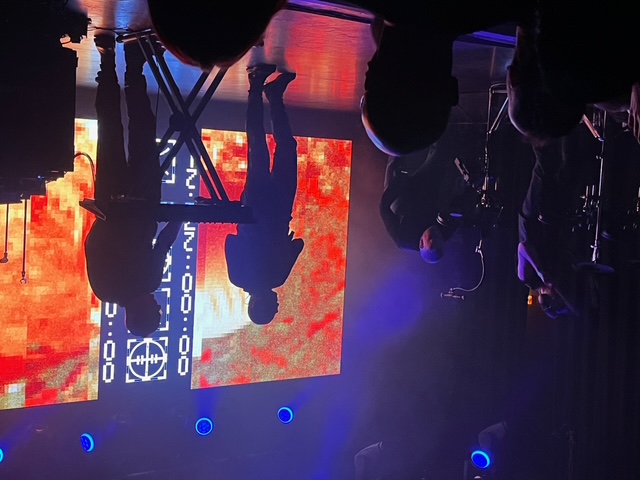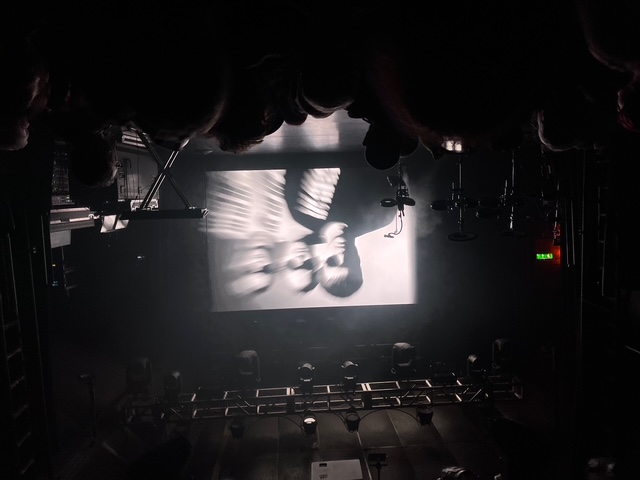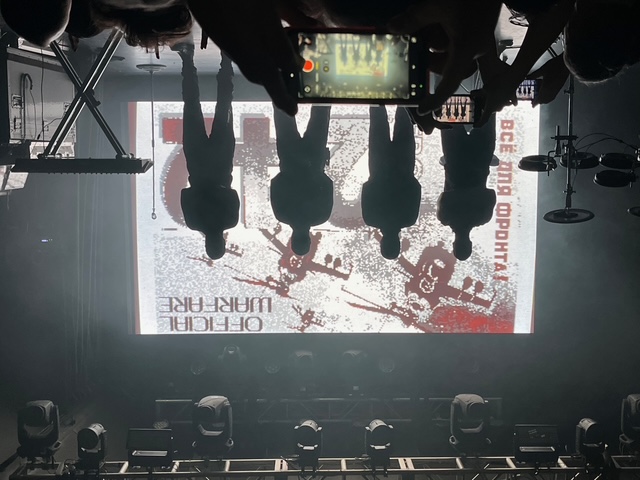You know what today's date means my friends. Unless you're American, in which case you may be understandably puzzled by the significance of 2/24.
While there is certainly no shortage of hot new EBM gear emerging at the minute, Front 242's recent retirement from the biz feels like the end of an era. DAF are long gone and with Doug's health problems another Nitzer Ebb tour is far from guaranteed.
The magnificent Belgians at least got a hearty send-off from their London fans, as you can see from the above clips. The crowd at the Electric Ballroom last December were a lot friskier than they were at the Islington Academt in 2022. To be fair, thanks to a lil something called rigor mortis, a room full of still-warm cadavers would've been friskier. n0teeth's mind still boggles at how some people, when urged to move their body (by a man given it his all on stage while recovering from a severe bout of ill health, no less), simply chose not to.
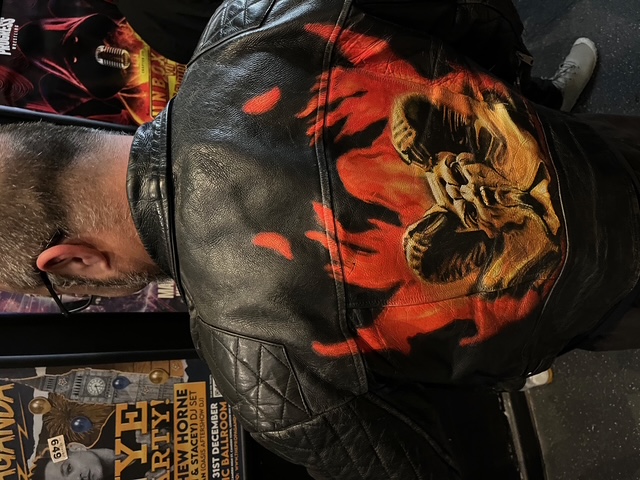
A fellow gig goer wearing a jacket hand-painted with the Religion artwork 30 years ago by a since departed friend
The n0teeth line on this is clear: jostling squares out of the way to make room for seriously committed movers and shakers in the pit is EBM praxis. But what of the theory? Well, there's a book you can get for that now.
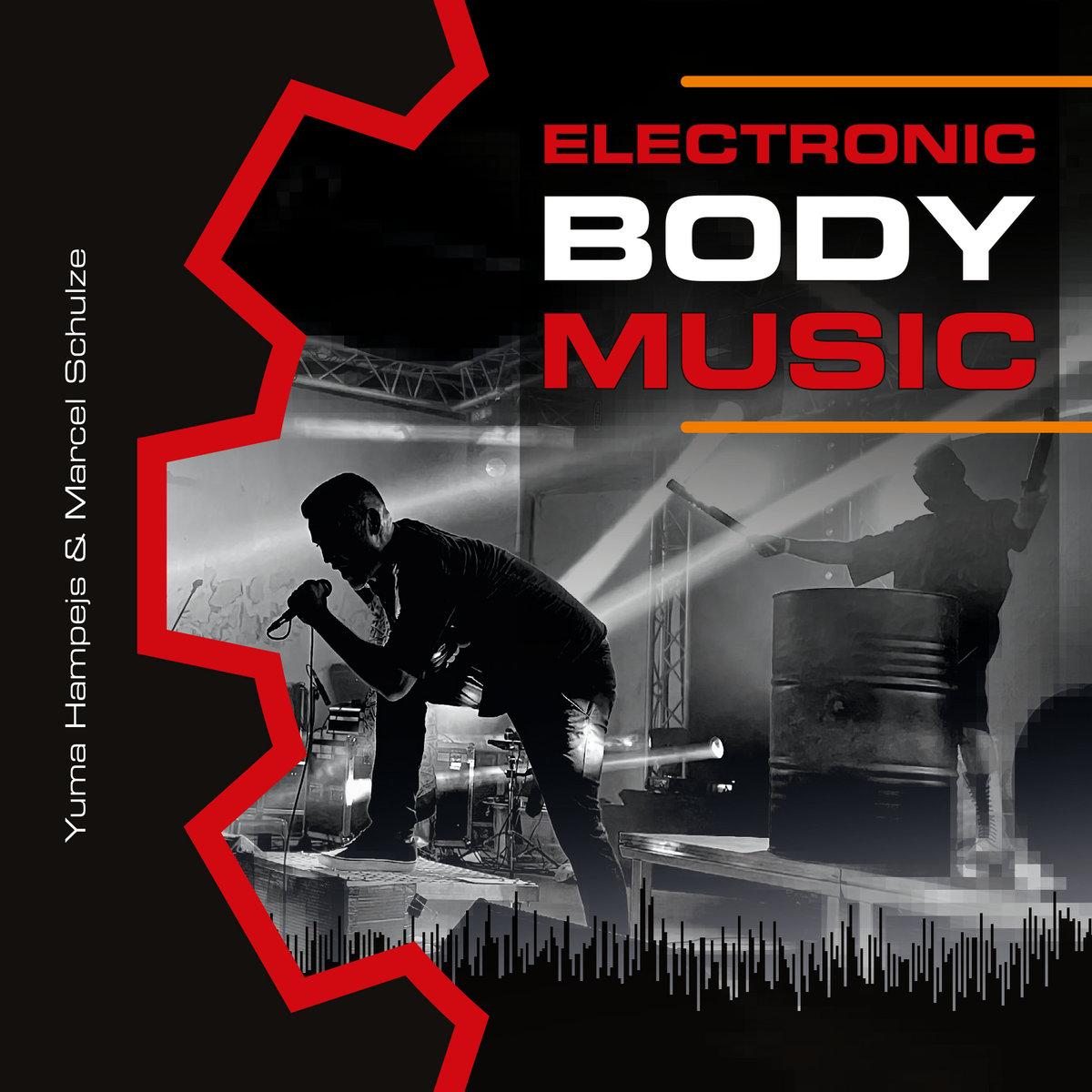
It seems like every five years or so some section of the music press rediscovers EBM and decides to dust off its favourite selection of classic tracks to introduce a new generation to the sound of the body beat. This is usually accompanied by a few choice soundbites from bands, DJs and producers who, while not necessarily playing EBM exclusively, can truthfully cite it as a big influence. Then a bit of editorial about how EBM relates to techno/electro/post-punk-wave-goth-disco-jazz-funk-whatever musical angle the website or magazine usually covers.
I'm not complaining, of course. After all, the rotting corpse of punk remains a constant source of wormfood for thinkpieces and documentaries grotesquely exaggerating its lasting impact on the world - so why shouldn't n0teeth's beloved electronic body music get the occasional dusting off & reintroduction to the broader listening public?
At the time of writing there is an EBM documentary premiering around the country, and I already hold in my hands this book on the subject by Yuma Hampejs and Marcel Schulze (A friend asked: "What's the book like?"; n0teeth: "Thick and square.")
I'm still only halfway through this meaty tome but am enjoying it so far. It's impossible not to be charmed by the authors' bubbly, English-as-a-second-language approach which at times feels like being in the company of a drunk German rivet head enthusing about all his favourite Electric Tremor bands over pints of Kölsch at a festival. Sure, it could have done with better proofing/localisation, but n0teeth is hardly in a position to criticise anyone's writing for sounding too much like an amateur listener's hype and enthusiasm. Plus, a good chunk of it is an oral history as told by the bands themselves. There are a few points that don't sit right with me however.
Firstly, I must strongly contest the book's assertion that European EBM is more "complex and intricate" than North American EBM, especially when the examples cited are Skinny Puppy, Front Line Assembly and Nine Inch Nails - three bands that have mutated beyond the subgenre's limitations and incorporated melodies, pop strong structures and elements of many different types of electronic music. European EBM is at its best precisely when it's stripped down and basic: see the simple barked commands of DAF or Nitzer Ebb, or any of the Anhalt-adjacent revivalists.
Secondly, the book makes at least two mentions of the influence of rockabilly on the old school EBM "revival" (one band even cheerfully self-describing as "bodybilly", surely equivalent to proudly boasting of being a kiddie grot aficionado). This is presented as a neutral fact rather than the worst thing to happen in Europe since the Second World War.
It has not escaped n0teeth's notice how many Anhalt-adjacent artists and their fans sport quiffs and other elements of 50s greaser style. Maybe And One somehow making their most annoying song even worse was the start of a slippery slope, or maybe these GCSE drama Grease production looking dorks discovered EBM of their own accord and found arpeggiated synths to be a decent substitution for the double bass.
(For anybody still unclear on our stance with regards to 1950s retro vintage culture: here at n0teeth the only "-billy" we approve of is an acrid off-white paste that when dried out and hoovered up can keep you bopping and grooving to EBM for days on end.)
Occasionally the quality of the book also suffers from being curated poorly, if at all. This is especially so in the section on Luton louts Click Click - oddly, one of the very few not written in the third person. While founding member Adrian K Smith certainly provides an entertaining and descriptive biographical account of the band's career, the word "EBM" doesn't appear even once in eight and a half pages, leaving any reader who has never heard Click Click's mutant industrial funk for themselves wondering what, if anything, this rambling tale has to do with the book's subject matter.
I did at least make a bizarre new (old) musical discovery thanks to one of the names dropped in that chapter however: The Jonathan S. Podmore Method, a Sheffield act who who made the kind of songs JG Thirlwell would've cut from a Foetus album for being too unhinged.
Credit where it's due, however: for their alphabetical catalogue of who's who in the world of body music, Hampejs & Schulze took a truly global approach, refusing to stick to the most obvious hotspots of Germany, Belgium, Scandinavia and North America. Instead they platform bands from Poland to Peru, Russia to (b)Razil, many of them not that well known yet and all of them firmly in the "actual EBM" camp. It's as if the authors made a conscious decision to exclude anything that crawled out in the wake of Zoth Ommog stomping its little New Rocks and trying to do a scary evil goblin voice while laughably claiming to be continuing the lineage of Front 242's muscular machine funk, DAF's sweat-glistening homoerotic electro-punk or Nitzer Ebb's muscular homoerotic sweat-glistening machine funk. A decision which n0teeth wholeheartedly supports either way. Death to false EBM!
The "Lost Generation" chapter is a vital and long overdue situating of 2010s techno-body-music - which I suppose one might call "Berlin EBM" the same way the old school revival of the preceding decade was "Anhalt EBM"- within the wider context of what was happening in EBM worldwide. The story of this genre, still evolving and going strong after 40-odd years, does not end there, of course.
The book covers one of the most exciting developments in EBM in recent years: the rise of young upstarts Chrome Corps(e) and their French allies null split, all framed within the context of the early 2010s. The sparks that ignited this revolt against the stagnation of a genre that by now was frequently resorting to retro nerd culture schlock and grating, unfunny self parody to mask its insecurity and lack of fresh ideas were two raging LA noisemakers collectively known as Youth Code. The Code are the best kind of pioneering band, simultaneously happy to shoulder the burden of being at the helm and humble enough not to keep an iron grip on it. After opening the floodgates, they stood back and let younger artists - including Chrome Corpse, High Functioning Flesh, Diesel Dudes and Club Music (sadly overlooked here) - ride the wave.
As an aside: it's refreshing to see an artist from the generally (and preferably) guitar-free world of EBM acknowledge the influence of Rammstein as a gateway drug to the wider spectrum of German alternative music. The idea that this carnivalesque heavy metal band (whose sound is inarguably far more derivative of Oomph! and Die Krupps than Laibach, to whom they are most frequently, lazily and ignorantly compared*) could have inspired younger generations to express themselves musically rather than gun down their classmates may provoke a sceptical snort from anybody who'd left their teens by the time Herzeleid came out. But according to main Diesel Dude Douglas DuFresne, it was "an early fascination" with the East Berlin sextet that prompted further digital crate-digging and broadening of musical horizons. This is surely no different from older generations progressing to more experimental music via Sparks or Bowie or whatever other pop rock they heard on the radio or saw on Top Of The Pops while growing up - you weren't born clutching a Faust LP in your tiny hands either my friends!
It is significant to this reader that the NWOEBM was spearheaded by bands from the USA and Los Angeles in particular - home to Das Bunker, which, through some fault of its own (as well as market forces beyond its control), was the incubator for much of that which has been cringeworthy and unlistenable in EBM since at least the late 90s. That great polluted wen is also home to a certain record label that n0teeth believes to be responsible not only for promoting some of the most excruciatingly bad goth and "industrial" music ever released, but probably 9/11 and the Black Death as well.
During a brief period of hope that Chile's dictatorship-era constitution might be rewritten by its then-new, young, left-leaning president, the message "neoliberalism was born and will die in Chile" appeared on walls across the country. Similarly, aggrotech was born and with any luck will die in Los Angeles.
To sum up a piece that is in danger of becoming as verbose as the book it's supposed to be reviewing: this is overall an enjoyable and informative read, rich with new discoveries even for the learned scenester. Having in-depth music knowledge has become an underrated virtue in an age when any shit-for-brains can empty their cognitive bowels into an erratic Discogs or LastFM bio; Yuma Hampejs and Marcel Schulze clearly know their stuff. It's a testament to their love of this genre that they went to the effort of sharing in print form. And in such a satisfyingly cuboid shape to boot!
*To anyone who still thinks Laibach is Rammstein's most obvious point of reference: go and listen to Feiert Das Kreuz from Oomph!'s 1994 album Sperm you cloth-eared cunts.
